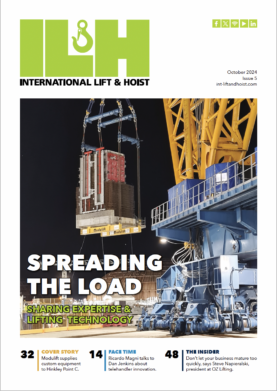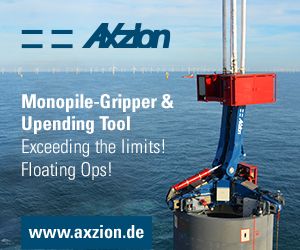Hatz Diesel to Add New Engine Family at Bauma | Daily Construction News
Hatz Diesel will premiere its new generation of water-cooled, four-cylinder engine with Bosch common rail system at Bauma 2013. In addition, a production-ready model of the revised L-Series will be on display, equipped with exhaust gas recirculation (EGR) and diesel particulate filter (DPF) in order to comply with the emission standards EU Stage IIIB and EPA Tier IV final. Furthermore, the business field 'Hatz Systems', which develops and sells entire systems based on the Hatz diesel engines, shows the series production Intelligent Power Pack (iPP). All exhibits will be shown on a newly designed stand in Hall A4 Stand 423/528.
From 2014, the new four-cylinder engine lineup will be available. With 1951 cc, the engine has a maximum power of 56 kW and a maximum torque of 240 Nm, which is already available from as low as 1600 rpm. Besides a main power take-off, an auxiliary power take-off is provided, which can be permanently loaded with up to 130 Nm. Due to an optimized combustion chamber geometry, combined with the sophisticated technology of the Bosch common rail system, which operates with injection pressures of up to 1800 bars, the particulate emissions are considerably reduced. Therefore it is possible to achieve the exhaust emissions standards EU 97/68 stage IIIB and EPA Tier 4 final without the use of a diesel particulate filter.
Apart from the technical data the motor can also score points with low cost of ownership; firstly because of a low fuel consumption of 210 g / kWh (best point), and secondly because of a long service interval of 500 hours. The latter is mainly because of the 7 litre oil sump and maintenance-free hydraulic valve train adjustment.
The L-and M-Series engine also have been revised. The three- and four-cylinder versions of both engine series will be available with exhaust gas recirculation, separable diesel particulate filter and oxidation catalyst in the second quarter of 2013. Both engine series comply with the exhaust legislation in the EU and the U.S., EU97/68 Stage IIIb and EPA Tier 4 final respectively. The exhaust after-treatment including the associated components such as HC evaporator can be mounted in various positions, thus contributing to many uses.
The iPP – intelligent power pack – which is developed and produced by the division Hatz Systems is on display in its final equipment level at the Hatz Bauma stand. The engine speed of the 3.5 kVA generator unit is completely variable and will adjust automatically depending on the required load. This provides a reduced usage of consumables, extended maintenance intervals and reduces wear. In addition, the generator impresses with its compact dimensions and reduced operating noise of just 66 dB (A) in a 7m radius.
With dimensions of just 536 x 630 x 510 mm (height x width x depth), corresponding to a volume of about 172 litres, and a weight of about 120 kg, the iPP is a compact and lightweight diesel generator for professional use. The basis is a Hatz 1B30V with vertical crankshaft, which is the perfect engine for this application not just because of its size.
The iPP is equipped with a permanent magnet generator (PMG) which is directly integrated into the engine flywheel. Thus the generator is saving space and is cooled efficiently in the air supply of the engine. Unlike conventional generators, a PMG is maintenance-free, with no significant wear and with a high efficiency of up to 90%.
In the standard configuration the iPP provides a voltage of 230 V at 50 Hz, on request, also a 60 Hz version is available.
In addition to the world premiere of the H-Series, another water-cooled model will be presented: the 1D81 hydro concept. The basis of the prototype consists of a robust and reliable 1D81, which is equipped with a new cylinder and head with water cooling.
The special feature of the new system is the compact design of the overall system. Using the existing flywheel along with a compact radiator and having not a single external waterhose, the engine is only slightly larger than its air cooled counterpart.
With the prototype the effects on engine performance, noise and exhaust emissions through the use of water cooling are examined.











